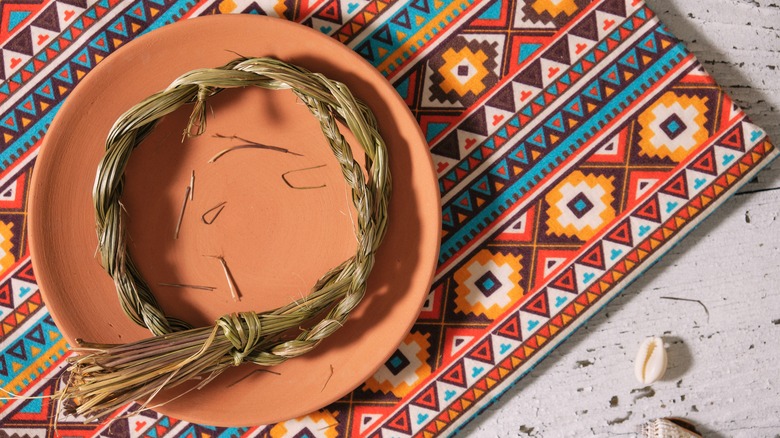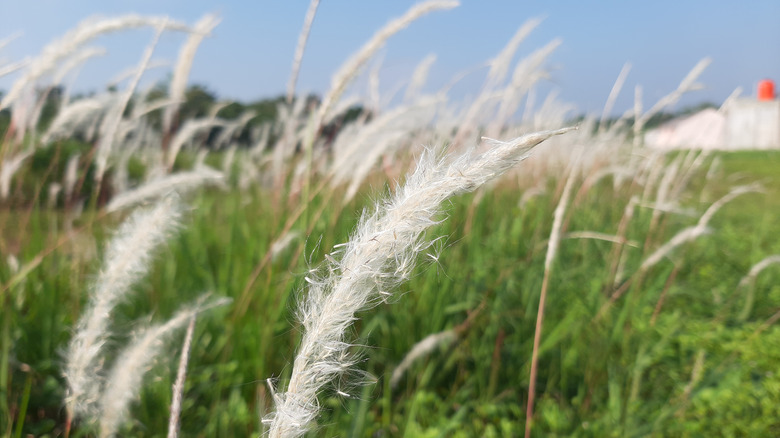How To Grow Sweetgrass In Your Yard For All Its Unique Benefits & History
"Plants are also integral to reweaving the connection between land and people." Robin Wall Kimmerer shared this piece of wisdom in her book "Braiding Sweetgrass: Indigenous Wisdom, Scientific Knowledge and the Teachings of Plants." The author, a botanist and Potowatami tribe member, shows how essential sweetgrass (Hierochloe odorata) is to indigenous cultures in North America. Also called buffalo grass or vanilla grass among other names, this versatile plant flourishes in zones 3 through 11, and both braiding and burning it is deeply symbolic to tribes from the Atlantic to the Pacific.
Growing sweetgrass isn't difficult; in fact, it grows and spreads well enough to become invasive in certain areas. Sweetgrass may or may not take over your garden if you plant it in the ground, so consider planting it in your yard in a raised bed. Check local ordinances to see if there's any risk to growing sweetgrass in your area as well. Due to its tendency to spread, some nurseries recommend growing sweetgrass in pots. It spreads by rhizomes (underground stems similar to roots), so container gardening will rein in its enthusiasm. It can grow indoors and outdoors, but outdoors is preferred so it can experience all seasons. Try growing your sweetgrass in one of these cheap garden containers you likely already have around the house.
Start plants in 2-gallon pots with soil containing phosphorus and potassium. Place the pots in full or partial sun, and water them daily. When the plants begin to spread their rhizomes, either transplant your sweetgrass to a 5-gallon pot or divide the plants into other pots.
Why should you grow sweetgrass in your yard?
If summer is less enjoyable for you because of mosquitoes, plant some sweetgrass. First Nations people traditionally used the plant to ward off biting insects, and researchers have found that the compounds in sweetgrass that are nearly as effective as DEET but much less harmful. If you want to use your sweetgrass like this, harvest it when it's not flowering, either by cutting or pulling up a section by the roots. Crush a handful in sachets and place them around your patio, or burn a bit in a fire-safe area outdoors.
You can also reap the bug-off benefits without picking it; The American Chemical Society found that as it grows, sweetgrass emits the chemicals that keep bugs at bay. Tuck a few sweetgrass plants into TikTok's easy DIY planter that deters mosquitoes in a beautiful way. Plus, you can take advantage of its dramatic height for dimension in your planters and also as a way to create a private patio space. Sweetgrass thrives in areas as chilly as USDA zone 3 as well as steamy places in zone 11. No matter your climate or concerns about it becoming invasive, you can make sweetgrass a fragrant part of your outdoor space.

